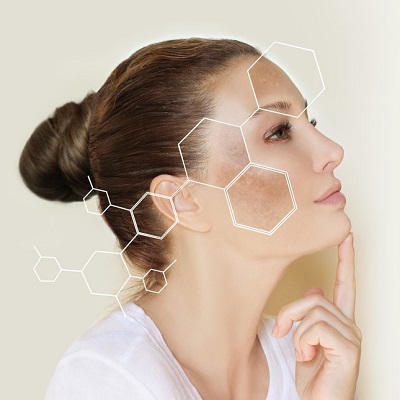
Skin that appears darker than usual is called “hyperpigmentation” and is not a medical problem. Some of the reasons for hyperpigmentation are exposure to sun rays, drugs, pregnancy, and conditions such as adrenal disease. The problem can be treated topically. It affects the whole body, appearing in small spots and covering vast areas. Most pigmentation is harmless, although it may indicate a medical issue.
But how can you prevent pigmentation? Let us find out!
Types of hyperpigmentation:
Melasma, sunspots, and post-inflammatory hyperpigmentation are most common. More hyperpigmentation types exist.
Melasma is the term for dark spots. It is linked to prolonged sun exposure, and light-exposed areas like the hands and face get spots.
An inflammation-induced hyperpigmentation results from skin damage or inflammation. This is often caused by acne.
Dermatological treatments for pigmentation:
Some common treatments include:
Topical Creams:
Highly concentrated creams composed of hydroquinone, retinoids, corticosteroids, kojic acid, or azelaic acid usually bleach pigmented areas after months of application. They perform this by messing up with melanin synthesis or by just removing the darkened cells.
Chemical Peels:
The chemical peel process implies applying a solution to the skin, which results in desquamation and the peeling off of the dead skin surface layers. It can also contribute to falling pigmentation by prompting the renewal of newer skin with the same pigment.
Laser Therapy:
Intense pulse light (IRP), fractional lasers, and Q-switching lasers, which can break down excessive pigment, are among the varieties of laser treatments available. Laser is special because it is used very specifically for things like sunspots, age spots, and mucosal, too.
Microdermabrasion:
This method employs a device that peels off the upper skin layer through a scrubbing action. Microdermabrasion clears pigmentation and encourages the production of new and even pigmented cells.
Microneedling:
The microneedling technique involves treating the skin with a mechanism containing multiple tiny needles, creating holes. This triggers the skin’s natural regeneration process, which then produces collagen and new skin cells to help remove pigmentation spots.
Cryotherapy:
Freeze therapy expels liquid nitrogen back from the shaded areas of the skin that may be pigmented. The melanin that causes dark patches is eliminated from the skin, and after the healing process is done, the uniform skin color gradually becomes apparent.
Cosmetic Procedures:
Other cosmetic methods, such as dermabrasion, skin resurfacing, and light therapy, may well be used when pigmentation problems are very severe, therefore, it is a case-by-case procedure.
Ideal Candidates for Pigmentation Treatment:
Ideal candidates for pigmentation treatment typically include individuals who have:
Hyperpigmentation translates to having many dark spots or patches of skin, thus accumulating melanin. Dark spots, melasma, sun spots, and PIH constitute the major ones.
Uneven Skin Tone: People with an uneven and shaded distribution in their natural skin color can benefit from treatments for skin pigmentation.
Sun Damage: People with sun-damaged skin, which is pigmented due to long-duration UV sunray exposure, generally do not face any adverse effects while being treated.
Age Spots, also dubbed solar lentigines or liver spots, are flat spots on the skin’s parts that constantly face the sun (e.g., the face, hands, shoulders, and arms).
Post-Inflammatory Hyperpigmentation (PIH): The skin can turn purplish or pink in case of injury or inflammation such as burns, cuts, or acne, which leaves areas that appear darkened, as the skin recovers.
Melasma: Brown or grey patches on the face may show up which often occur during teen ages because of hormonal irregularity or genetics.
Aftercare Precautions:
Common directions are below:
- Avoid going outside in direct sunlight. Your skin will suffer more.
- Do not take blood thinners because they are bad for clotting.
- Do not smoke, drink alcohol, or try illicit drugs.
- Take just the prescribed drugs for pain.
- Take some vacation days off from the gym and sports.
- Avoid skin contact, rubbing, and scratching
- Use the best sunscreen and moisturizer.
- Maintain a proper diet and drink enough water.
- Consult a dermatologist right away if you experience a severe contact allergic reaction.
Cost of Pigmentation Therapy in Islamabad:
Pigmentation treatment costs in Islamabad and Pakistan starts from 15,000 PKR. However, it depend on the type, degree of discolouration, and medical practitioner.
Book a Consultation
With Dynamic Clinic’s risk-free Skin Pigmentation Treatment, your skin can be revitalised and its natural glow can be restored. All along your consultation, our professionals and qualified staff will ensure you feel comfortable and at ease. To book a consultation, please get in touch with us through a phone call or by filling in the form below.


